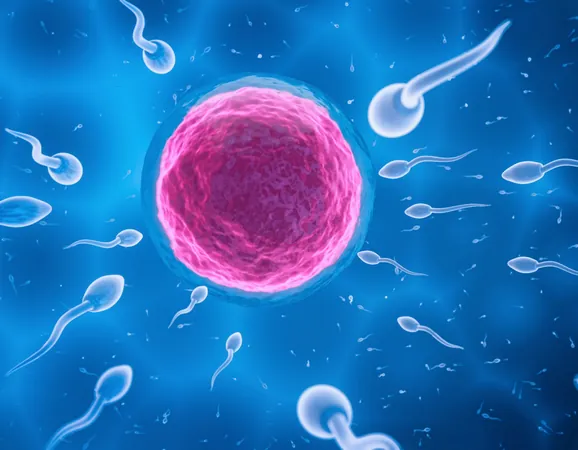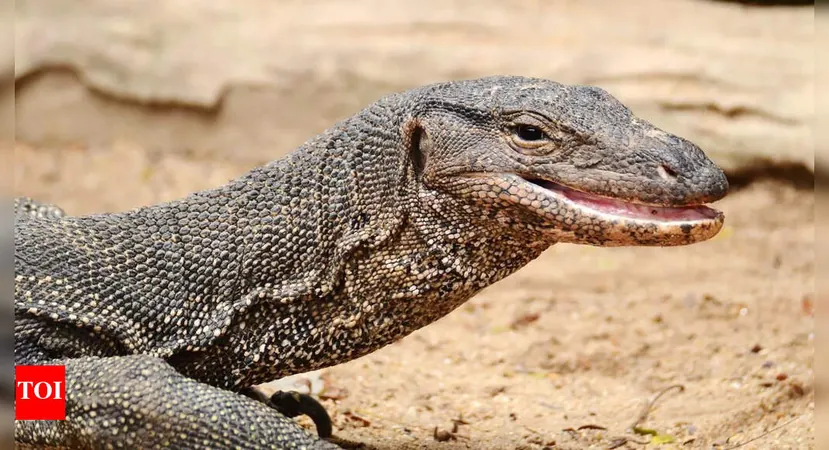
Could Paper Planes Be the Key to Cleaning Up Space Junk?
2025-07-14
Author: Rajesh
The Growing Problem of Space Debris
Space junk has become a pressing issue, cluttering low Earth orbit (LEO) with debris from a surge in satellite launches. This includes everything from discarded rocket bodies to defunct satellites, posing risks to vital operational satellites that facilitate navigation and communication. But it gets worse: large pieces of this debris risk crashing back to Earth, while smaller fragments could wreak havoc in the atmosphere.
Environmental Concerns of Space Waste
Beyond immediate dangers, space junk presents environmental threats. When old rockets and satellites re-enter the atmosphere, they burn up and release harmful chemicals that jeopardize the ozone layer. As launches increase, so does the chaotic mess in LEO, amplifying the environmental crisis.
Innovative Solutions on the Horizon
Amidst the chaos, space agencies and private companies are not only seeking to clean up the debris but also reinventing how we design rockets and satellites. Researchers are investigating the feasibility of using organic polymers as a sustainable alternative to metals. A new study from the University of Tokyo turns to an unexpected source of inspiration: origami.
Testing Paper Planes in Space
In a fascinating twist, researchers Maximilien Berthet and Kojiro Suzuki conducted simulations to see what would happen if a paper plane was launched from the International Space Station (ISS) at a height of 400 kilometers. They wanted to test its stability and thermal resistance as it fell back to Earth.
Initially, the plane glided smoothly in space's vacuum, owing to its clever folded design. However, after four days, it began to tumble uncontrollably when it reached about 120 kilometers above Earth. The researchers noted, "The low rotational inertia and aerodynamic characteristics allow it to maintain a stable orientation during most of its atmospheric entry, but below 120 km, it begins to tumble and faces severe heating, leading to burn-up at around 90-110 km."
Real-World Testing in a Wind Tunnel
To validate their findings, Berthet and Suzuki constructed a physical model of their paper plane and tested it in the Kashiwa Hypersonic and High Enthalpy Wind Tunnel. Exposed to conditions simulating re-entry at Mach 7 for seven seconds, the model bent slightly and exhibited charred wing tips, but remarkably, it did not disintegrate. However, prolonged exposure would have led to its destruction.
A Sustainable Path Forward
This groundbreaking research showcases how a seemingly simple idea could pave the way for a more sustainable approach to tackling space debris. The authors propose that paper-based spacecraft could facilitate future missions, collecting Earth data while safely burning up upon re-entry—leaving no harmful materials behind. This could be a significant step toward cleaner space travel and a safer planet.
As we push the boundaries of space exploration, innovations like paper planes could transform our approach to protecting both space and Earth, making our cosmic adventures not only exciting but also environmentally friendly.






 Brasil (PT)
Brasil (PT)
 Canada (EN)
Canada (EN)
 Chile (ES)
Chile (ES)
 Česko (CS)
Česko (CS)
 대한민국 (KO)
대한민국 (KO)
 España (ES)
España (ES)
 France (FR)
France (FR)
 Hong Kong (EN)
Hong Kong (EN)
 Italia (IT)
Italia (IT)
 日本 (JA)
日本 (JA)
 Magyarország (HU)
Magyarország (HU)
 Norge (NO)
Norge (NO)
 Polska (PL)
Polska (PL)
 Schweiz (DE)
Schweiz (DE)
 Singapore (EN)
Singapore (EN)
 Sverige (SV)
Sverige (SV)
 Suomi (FI)
Suomi (FI)
 Türkiye (TR)
Türkiye (TR)
 الإمارات العربية المتحدة (AR)
الإمارات العربية المتحدة (AR)